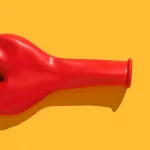Prince Albert piercings can amplify nerve stimulation during sex or masturbation, but they may also raise the likelihood of infection or injury for you and your partner. Proper planning and diligent aftercare are critical.
The Prince Albert (PA) piercing is among the most frequent penis piercings. It’s performed by passing a barbell or other jewelry through the urethral opening and out through the underside of the glans behind the head.
A Reverse PA is placed by threading a barbell or other jewelry into the urethra and out through the top of the glans. The exit point is on the top of the head rather than underneath.
A Deep Shaft Reverse PA is carried out by guiding a barbell or similar jewelry into the urethra and out through the top of the shaft. The exit site is located much farther down the shaft, well away from the glans.

What does a Prince Albert piercing look like?
What type of jewelry is used for a Prince Albert piercing?
You can typically choose from the following styles:
- Circular barbell: a horseshoe-shaped piece with removable beads on both ends
- Captive bead ring: a circular ring with a bead where the ends meet
- Straight barbell: a rod-shaped piece with removable beads on both ends
- Bent barbell: similar to a straight barbell but with a gentle curve from one end to the other
Your piercer will probably recommend jewelry made from:
- Surgical titanium: less likely to trigger allergic reactions or irritation in sensitive skin
- Biocompatible polymers (plastics): durable, flexible, and a good option for initial piercings
- Niobium: hypoallergenic and more resistant to wear than many other metals
- Gold: opt for 14-karat yellow or white gold to reduce infection risk during healing; avoid gold-plated items, which can provoke allergic responses and infections
- Platinum: the most robust and long-lasting choice, though it’s considerably pricier and harder to source
How is a Prince Albert piercing done, and will it hurt?
You do not need to be erect for this piercing.
Your piercer will:
- Put on sterile gloves, then clean and sterilize the area to be pierced.
- Mark the spots where the needle will enter and exit the skin.
- Push the needle through the entry point and out the exit point. They’ll likely ask you to take a deep breath and exhale as the needle passes through.
- Hold the skin steady with forceps while inserting the jewelry.
- Clean, sterilize, and dress the pierced site.
The penis has dense nerve endings and delicate tissue, so a PA may be more painful than piercings in other parts of the body.
Placing larger or more complex jewelry—such as a PA wand—can increase the chance of discomfort.
How much does it cost to get a Prince Albert piercing?
A PA piercing may range from about $50 to $150 at budget studios, to several hundred dollars at upscale shops that use pricier jewelry.
Here’s a common cost breakdown:
- Service: from around $40 up into the hundreds, depending on the piercing’s complexity and the studio’s pricing
- Jewelry: from about $15 for basic steel or titanium to hundreds for platinum, gold, or diamond-adorned pieces
- Piercer tip: typically at least 20% or more for high-quality service
What are the benefits of a Prince Albert piercing?
Jewelry on the glans or shaft can move and brush against penile tissue during masturbation or partnered sex.
This movement can activate additional nerve endings and heighten pleasure during sexual activity. It can also stimulate more of your partner’s nerves during penetrative vaginal or anal intercourse.
You can switch everyday jewelry for a prince’s wand, a kind of “play” ornament used for urethral sounding. It’s not suitable for newly pierced tissue, but some people work up to it over time.
What risks are associated with a Prince Albert piercing?
As with other piercings, PA piercings can get infected, migrate (shift position), or be rejected by the body.
Genital piercings specifically have been associated with an elevated risk of bloodborne sexually transmitted infections (STIs).
PA jewelry can catch or weaken condoms or other barriers, causing them to tear and exposing you to your partner’s fluids and vice versa. This increases the chance of STI transmission and unintended pregnancy.
PA jewelry may chafe, rub, or injure sensitive areas of your partner’s genitals, anus, or mouth during sexual activity.
In some situations, jewelry can snag on your partner’s genital, anal, or facial jewelry. This can be painful or hard to resolve without medical assistance.
How do you care for a Prince Albert piercing?
A PA piercing tends to heal relatively quickly—about 4 weeks with appropriate care.
To keep your PA piercing clean:
- Wash your hands with warm water and soap before touching the area.
- Soak the pierced site in a saline solution twice daily.
- Gently remove any crust that forms around the area.
- Use a clean paper towel to pat the area dry.
- Cover the site with a bandage. Change the bandage at least once a day.
To lower the risk of irritation, infection, or injury:
- Always wash your hands before touching the area.
- Protect your penis from direct shower water and avoid soaking in baths or pools.
- Do not clean the piercing with anything besides mild soap and water or saline solution.
- Keep the jewelry in place until the piercing is fully healed.
- Wait until initial pain and swelling subside before masturbating or engaging in oral, anal, or vaginal sex. Use a condom or other barrier with partners.
You might need to relearn how to urinate to prevent spraying from new urethral openings. Try aiming the hole downward or covering it with your finger.
How do you know if your Prince Albert piercing is healing correctly?
Mild pain and swelling are common after any piercing. However, some signs indicate more serious problems.
See a healthcare professional if you notice infection signs such as:
- skin that is hot to touch
- discoloration spreading beyond the pierced area
- white, yellow, or green discharge from the urethra or exit site
- ongoing pain or discomfort
- severe swelling
- foul odor
Talk to your piercer if you notice signs of rejection, which may include:
- dangling or sagging jewelry
- thinning or breakdown of skin between the entry and exit points
- complete displacement of the jewelry
Nonstandard piercings can be pushed outward as the skin and tissue regenerate. The timeframe varies for each person—overall health, tissue quality, and aftercare play big roles.
Your piercing may remain for months to several years.
How to change the jewelry or allow the piercing to close (retire)
Don’t swap or remove your jewelry until the piercing is fully healed. Doing so too early can trap bacteria under the skin and lead to infection.
If you’re unsure whether the piercing has healed, have your piercer examine it. You can also ask them to change or remove the jewelry for you.
If your piercer clears you to change the jewelry yourself, you should:
- Wash your hands with warm water and soap.
- Rinse the area with a saline solution.
- Carefully unscrew or remove any beads from the current jewelry.
- Slowly withdraw the jewelry from the hole.
- Carefully unscrew or remove any beads from the replacement piece.
- Gently guide the new jewelry through the opening.
- Replace the beads you removed from the new jewelry.
- Secure the jewelry so it won’t move or fall out.
- Rinse the area with saline solution and gently pat dry.
If the piercing is fully healed and you choose to stop wearing PA jewelry, simply remove it. The exit hole will gradually close over time.
The bottom line
Do your homework to ensure the piercing is performed at a studio with good reviews and a strong safety reputation. An experienced piercer can advise on placement, explain risks, and instruct you on aftercare.
Your body or skin may not be a good match for a PA piercing, and that’s okay. Your piercer might suggest an alternative piercing that’s more comfortable and possibly more suited to you.


















Leave a Reply
You must be logged in to post a comment.